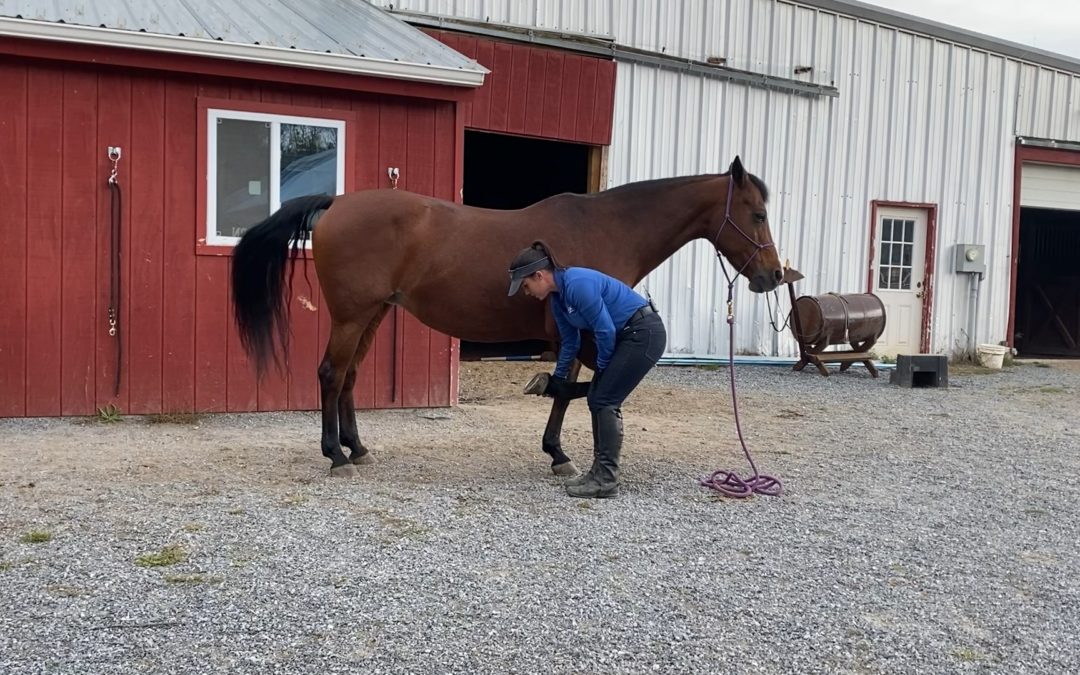“No Hoof, No Horse.” If you’ve been in the horse world any length of time you’ve probably heard that saying before. It emphasizes the importance of strong healthy hooves, and how without them your horse’s quality of life is diminished. A big part of a horse’s hoof care comes from its farrier. A good farrier can help a lame horse walk sound, and restore unhealthy hooves back into balance. I know for sure that my farrier has saved the life of at least one of my horses, and has prolonged the lives of my others. A great farrier can be hard to come by, and if you have a great one you don’t want to lose them! I am going to give you a few tips that will ensure your farrier enjoys working on your horse and perhaps will help you to become his/her favorite client!
Years ago when I was interviewing a potential new farrier, I realized he was also interviewing me! He asked me what breeds and ages of horses he’d be working on. He asked if they had ever been shod, cold or hot? He asked if they stood tied and relaxed. He asked if their legs could be handled and if the horse willingly held their hooves up. He agreed to take my horses on as clients and I’ve been blessed to have his services for the last 12 years. Recently, I reminded him of the “interview questions” he had asked me all those years ago. I asked him if those things were still important to him and if he had anything to add that he wished every client would do. I asked him to tell me what makes a “good” client. I’m going to share those things with you below.
- Have your horse out of the pasture, haltered, and ready to be worked on. Don’t wait for your farrier to get there to go catch your horse, and don’t expect your farrier to go out to the field to catch your horse themselves. Having your horse out and ready saves your farrier time and energy.
- Pay on time. If your farrier likes you to pay at the time of service, make sure you have appropriate payment ready. If he/she bills you, pay the bill in a timely manner.
- Have a flat, well-lit work area that is out of the elements. In order for your farrier to balance your horse correctly, the horse needs to be on level ground, and good lighting and shelter make the job easier.
- Teach your horse to stand still, either tied or loose, but in a relaxed manner. It’s very difficult for your farrier to work on a horse that is tense or fidgety and can’t stand quietly. Prepare your horse ahead of time with lots of practice tying or doing the “parking spot” in the area that they will have to stand for the farrier.
- Make sure your horse is relaxed and confident when you handle its legs. If your horse is bothered by someone touching its legs this can be a very unsafe situation for your farrier. Horses that are not relaxed when their legs are touched, and are tied up or feel trapped, are prone to kicking. Prepare your horse ahead of time with lots and lots of handling of their legs. If you are unsafe to get close to their legs you could start the process by rubbing their legs with a training stick until they can relax. This will help you to stay out of the kick zone while helping your horse become more relaxed and confident.
- Teach your horse to lift their legs willingly and to hold their legs up. There are many ways you can do this, but my favorite way to start is to use a lead rope around their leg. This way if the horse puts their leg down before I want them to, I can use the leverage of the rope and the distance from the horse it gives me to safely follow them as they put their leg down and ask them to pick the leg back up.
- Teach your horse to willingly put its front legs between your legs and the back legs up on your thigh like a farrier would do when they work on the hooves. Teach your horse to lift and stretch its legs up and forward as if to simulate the hoof stand your farrier will use.
- Give your farrier their favorite snack or drink. Mine likes Coca-Cola 🙂
Farriers are such an important part of our horse’s care team, and yet many of them have to work in dangerous situations and on horses that have not been properly prepared to stand relaxed while having their hooves done. It’s our responsibility as the horse’s stewards to teach them how to be relaxed, confident, and willing when having their hooves worked on. If you do these things, not only will your farrier be happy, but so will your horse!

